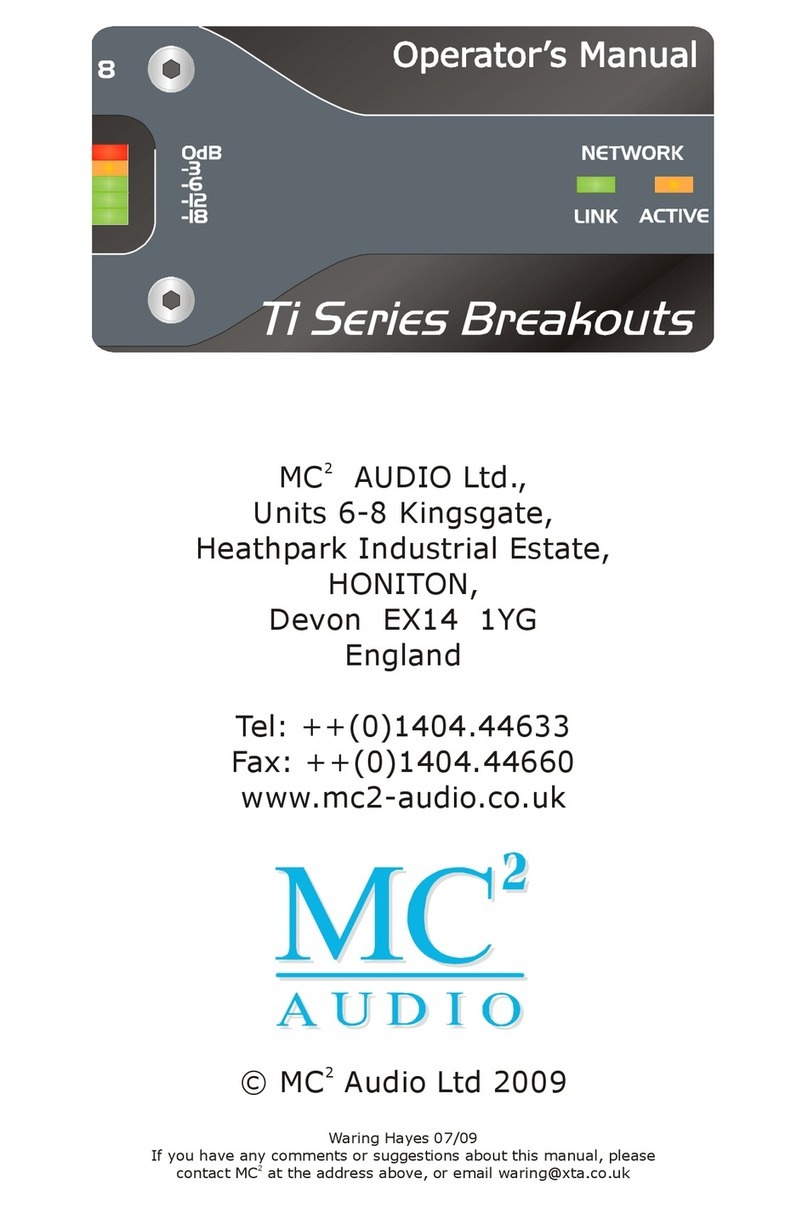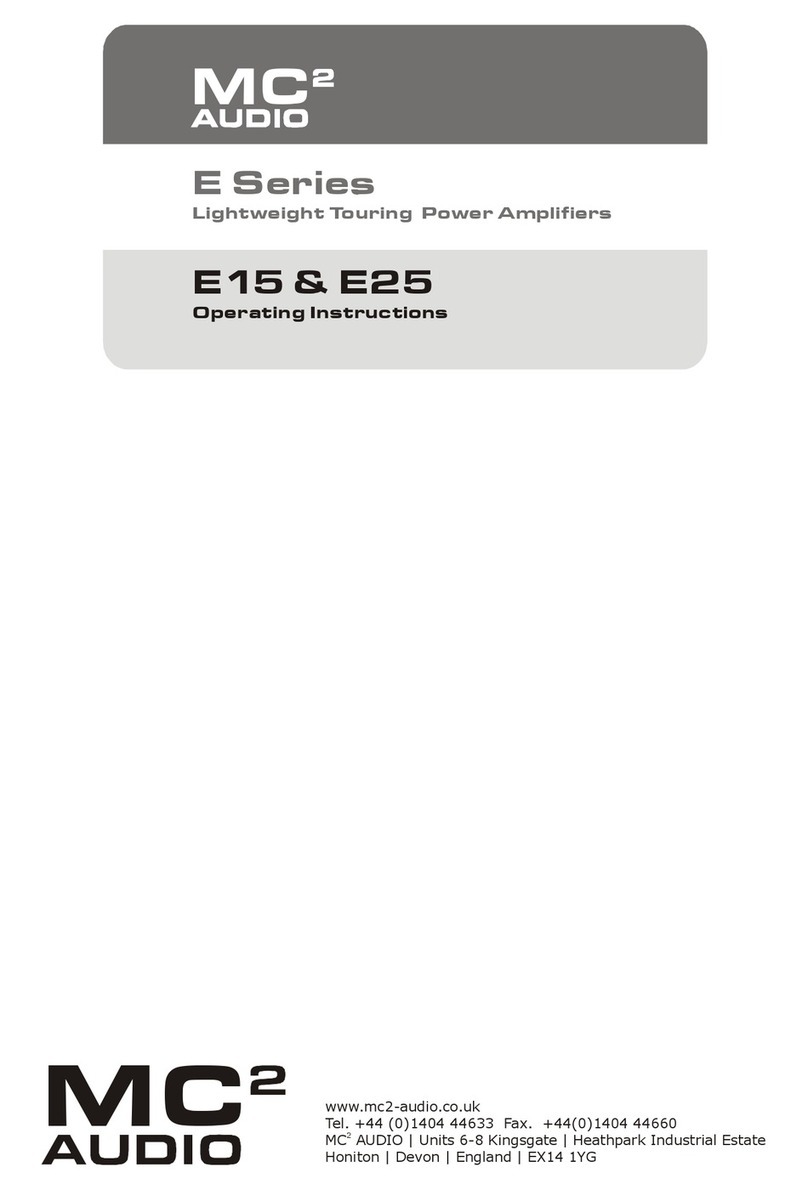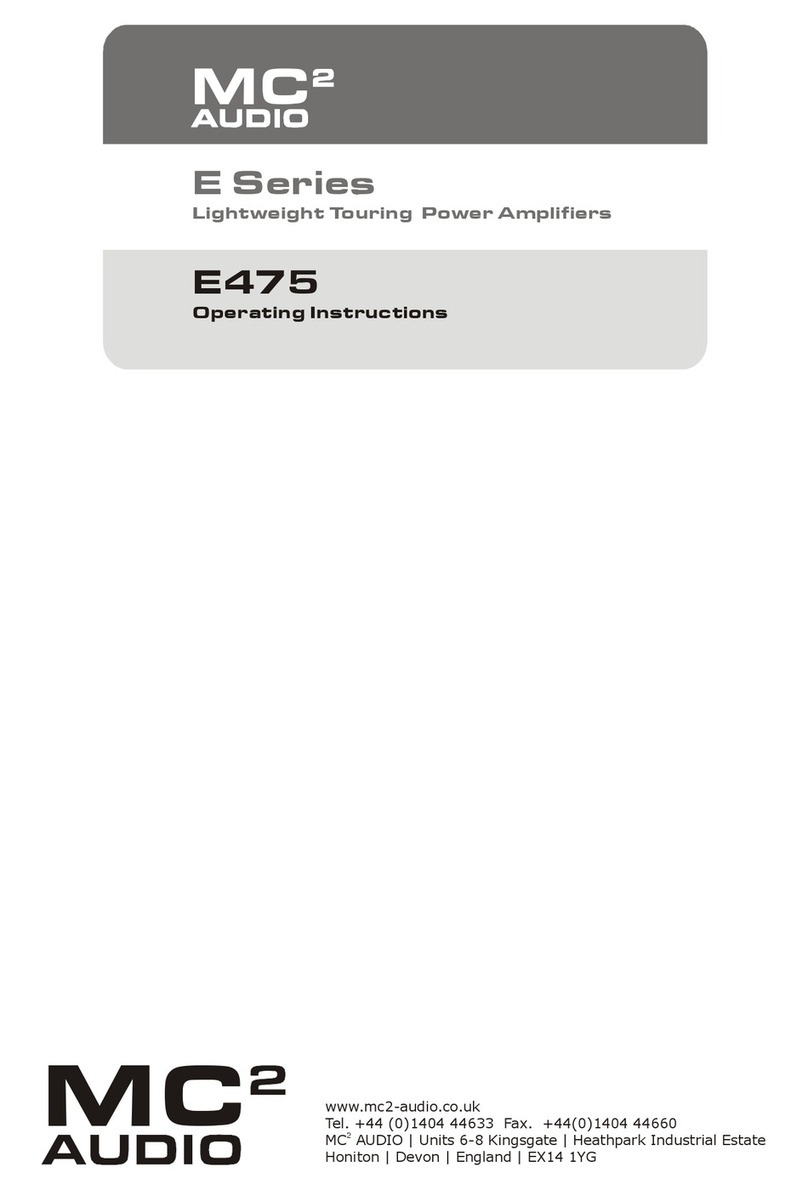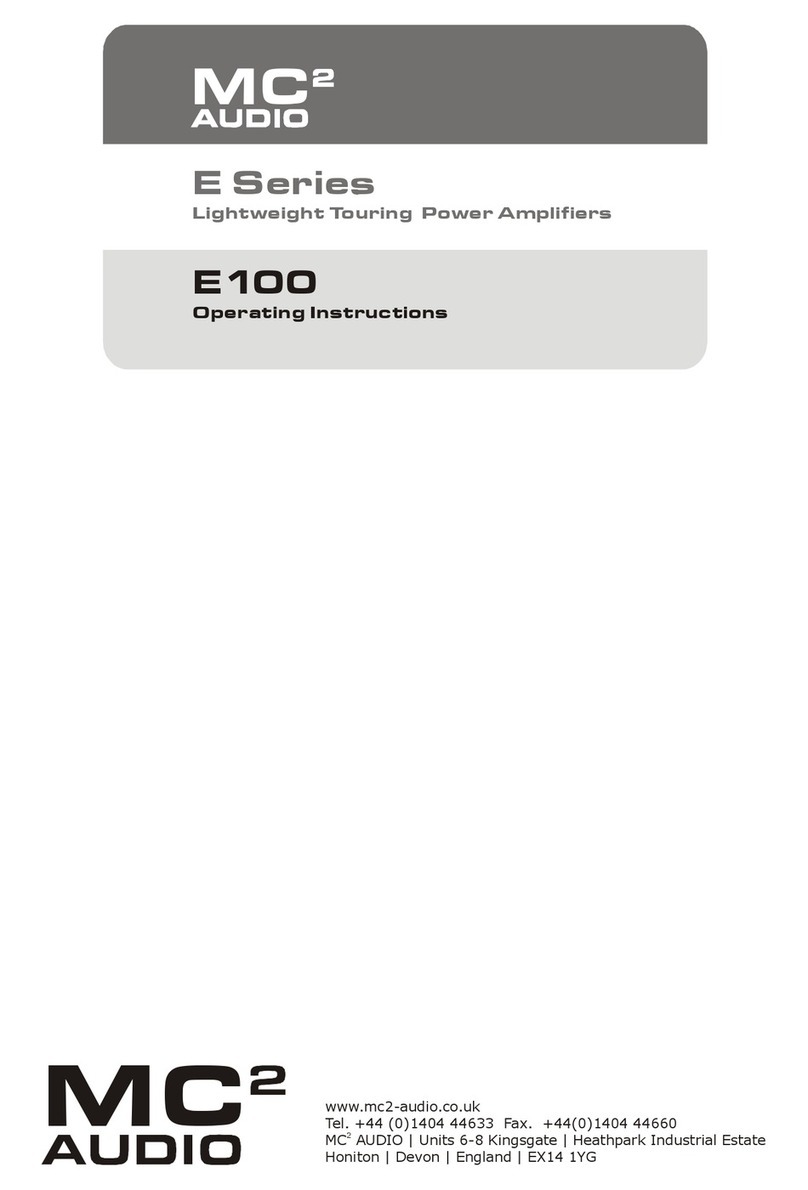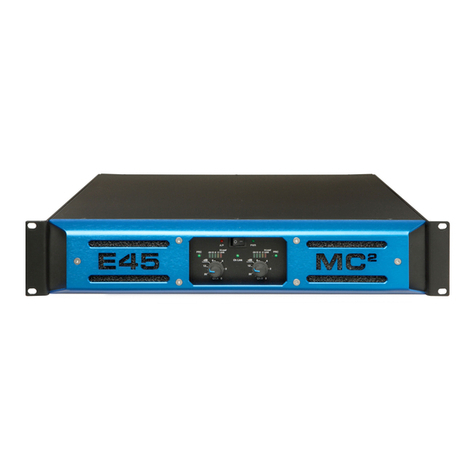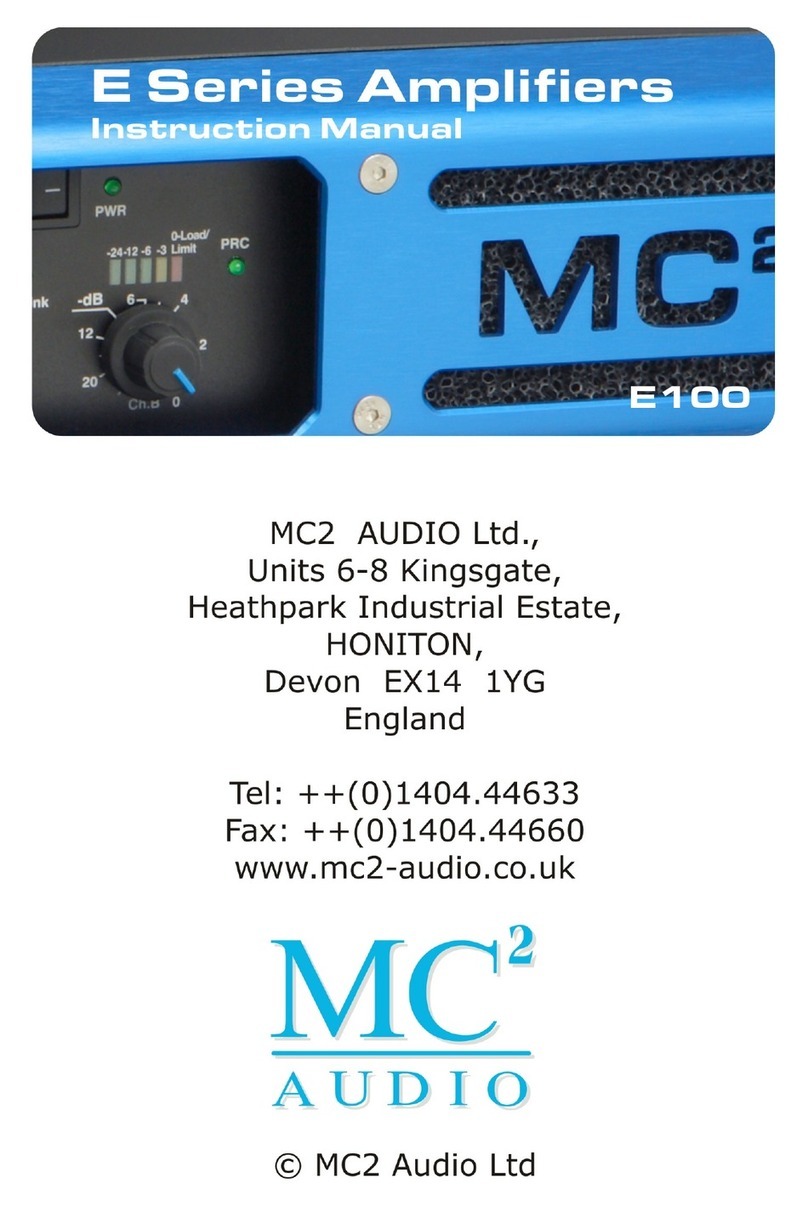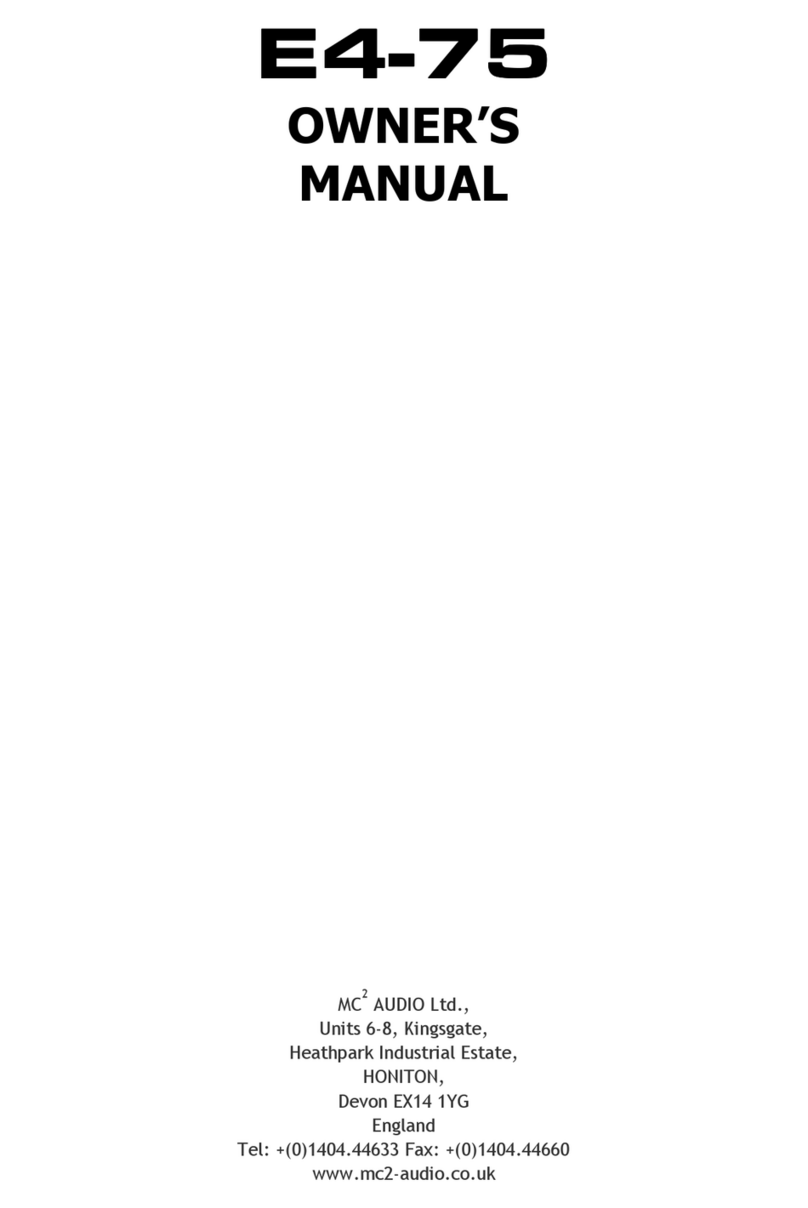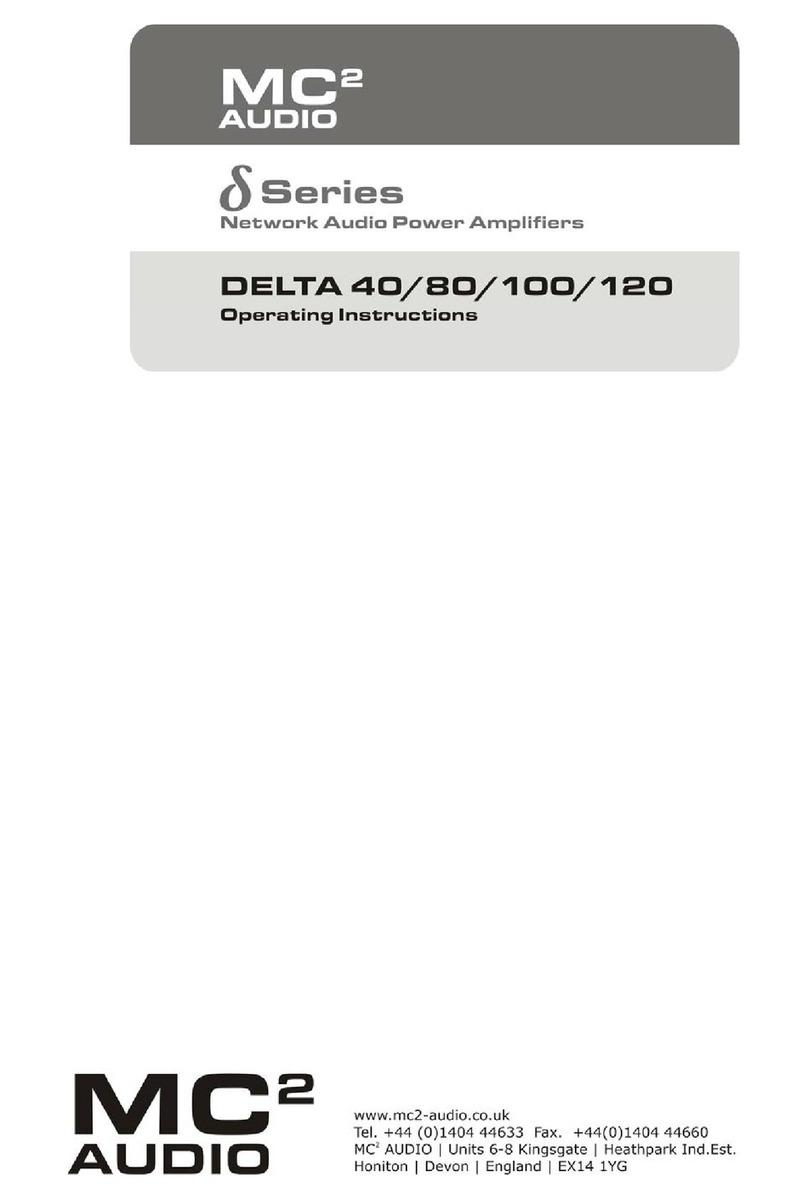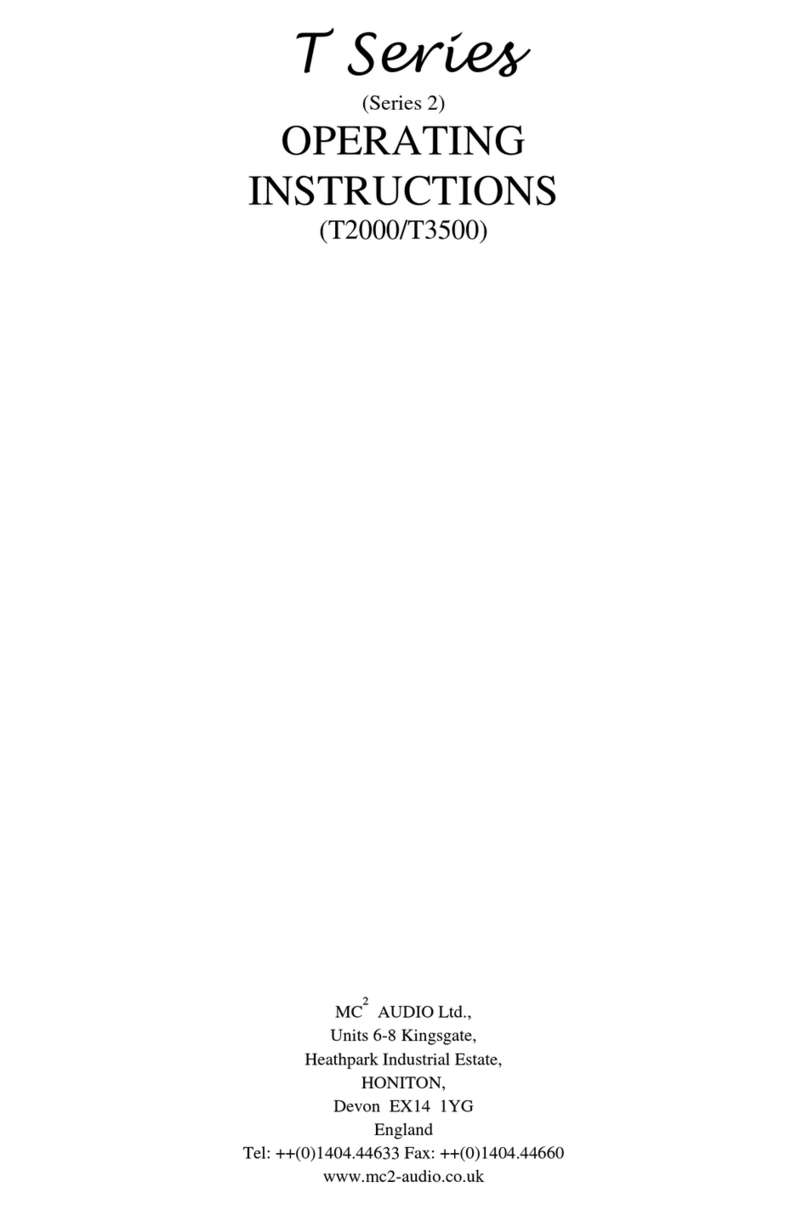10
It is important that the power output of your amplifier is matched to the power handling capacity of your
loudspeaker. If not, damage to the loudspeaker could occur.
SWITCHING ON
When the amplifier is switched on, the outputs will be muted and the controller will check for any faults.
It then goes through a power up routine and finally connects the speakers to the output stages and fades up
the signal to the level at which the amplifier was previously set.
PANEL CONTROLS AND INDICATORS
Level controls
These are continuous rotary encoders which provide fine adjustment (3 turns from min. to max.). When
adjusted, the level indicators change to level control position indicators and thus the height of the LED
column shows the level position. After a second or so the LED column changes back to monitor the signal
level. This function can be changed internally via the programming switches on the control PCB. (See the
Internal Configuration section.)
Mute Switches
These are self explanatory, and require one push to mute the signal and one to un-mute - toggle action.
The LEDs indicate their status and when "un-muting" the signal is ramped (faded) up.
Link Switch
This is also a toggle action switch, the LED above indicates its status. When ON, the two level controls
are linked together and either control will adjust both channels to the same level. The controls track very
accurately and operate as stereo attenuators. The limiters are also linked. When OFF, the level controls
and limiters operate separately.
Level Indicators
These are peak reading meters which show the signal headroom before clipping. The 0dB LED is set at
approximately 1/2dB below clipping. They are referenced to the supply voltages and automatically adjust
when the supply changes. When the level controls are adjusted, the level indicators change function and
show the level control position. They return to their normal function after the level has been set.
Limiters
The MC750 incorporates digitally controlled signal limiters. They attenuate the signal via the same switch
array as the level controls and introduce virtually no distortion. The attack time, release time, threshold
level and operating mode can be set internally via the programming switches on the control PCB. (See the
Internal Configuration section.)
When the level controls are "linked" then the limiters are also linked, and when the level controls are
separate then the limiters are separate.
The amplifiers leave the factory with the limiters set up in the OVER CLIP PROTECTION mode. The
threshold is set just below the clipping point, with fast attack and release times. This is the most sonically
transparent configuration, transients are allowed to go into clipping for a few milliseconds, but if large
amounts of overdrive are applied, the limiter will attenuate the signal back to the clipping point. Low
frequency signals will be clipped as normal because of the fast release time, changing the release time to
slow will prevent low frequencies from being clipped but will change the mid and high frequency
dynamics.
The threshold can be adjusted in 1dB steps up to 3dBs below the clipping point. The limiter then behaves
like a conventional limiter, transients will be allowed to go above the threshold level but the average peak
level will be kept to the threshold point.
